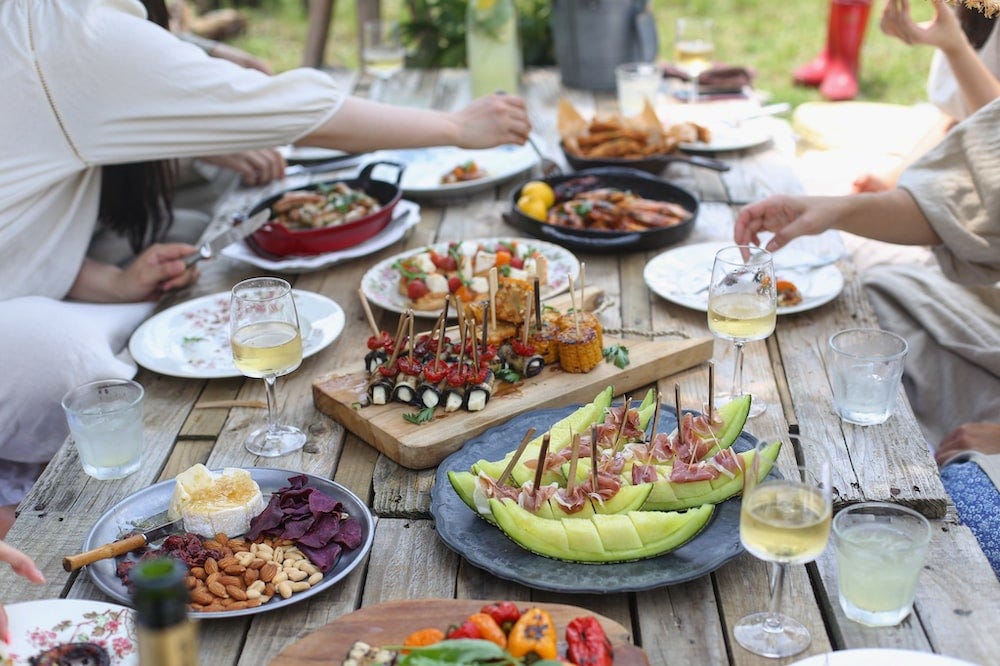Food is more than sustenance—it’s a universal language that tells stories of culture, history, and human connection. A culinary travel adventure weaves these stories into unforgettable experiences, blending the joy of exploration with the thrill of tasting new flavors. Whether you’re slurping noodles at a bustling night market in Bangkok or rolling fresh pasta in a Tuscan villa, these journeys awaken your senses and deepen your appreciation for the world. This article dives into why culinary travel is a must, how to plan your own adventure, and the top destinations and experiences that will leave your taste buds dancing.
Why Culinary Travel Matters
Food is the heartbeat of any culture. It reflects geography, history, and the people who shape it. A culinary travel adventure lets you step into this world, offering a lens to understand a destination beyond its landmarks. From savoring ceviche in Lima to learning the art of sushi in Tokyo, these experiences connect you to locals and their traditions in ways a museum visit never could.
A Connection to Culture
Every dish has a story. Take Mexico’s mole, a rich sauce blending chiles, spices, and sometimes chocolate. Tasting it in Oaxaca, where it’s been crafted for generations, reveals layers of history—indigenous, Spanish, and modern influences colliding on your plate. Culinary travel invites you to taste these narratives, forging a deeper bond with the places you visit.
More Than Just Eating
Culinary adventures go beyond dining. They include hands-on experiences like cooking classes, market tours, and visits to local producers. Imagine kneading dough with a Nonna in Italy or harvesting rice in Bali. These moments immerse you in the process, making every bite more meaningful.
Top Destinations for Culinary Travel Adventures
The world is brimming with destinations that cater to food-loving travelers. Below, we explore some of the best, each offering unique flavors and experiences. These places, drawn from my own travels and insights from culinary experts, promise to ignite your passion for food and exploration.
Tokyo, Japan: A Symphony of Flavors
Tokyo is a culinary paradise, blending ancient traditions with cutting-edge innovation. From Michelin-starred sushi counters to smoky yakitori stalls, the city offers endless delights. A guided tour of Tsukiji Outer Market, where vendors hawk fresh wasabi and seaweed, is a must for any foodie.
Why Visit Tokyo?
With over 200 Michelin-starred restaurants, Tokyo is a global leader in fine dining. Yet, its street food—think crispy tempura and savory okonomiyaki—steals the show. A cooking class here might teach you to roll perfect sushi or craft delicate wagashi sweets.
Top Experience: Omakase Dining
Book a seat at an omakase restaurant, where the chef curates a personalized sushi menu. It’s an intimate, almost meditative experience, showcasing Japan’s reverence for precision and seasonality.
Oaxaca, Mexico: The Soul of Mexican Cuisine
Oaxaca is the epicenter of Mexico’s culinary heritage, known for its seven types of mole and vibrant markets. The city’s food scene is a tapestry of indigenous and colonial influences, with dishes like tlayudas (crispy tortillas topped with beans and cheese) stealing hearts.
Why Visit Oaxaca?
Oaxaca’s markets, like Mercado de Abastos, burst with color and flavor—think dried chiles, fresh herbs, and grasshoppers (yes, they’re delicious!). A cooking class with a local chef will teach you to grind your own mole sauce, a labor of love that’s worth every minute.
Top Experience: Mezcal Tasting
Pair your culinary adventure with a mezcal tasting. This smoky spirit, crafted from agave, is Oaxaca’s pride. Visit a local distillery to sip and learn about its production.
Tuscany, Italy: A Feast for the Senses
Tuscany’s rolling hills and medieval villages set the stage for a food lover’s dream. Think handmade pappardelle with wild boar ragù, paired with a glass of Chianti. The region’s farm-to-table ethos makes every meal feel like a celebration.
Why Visit Tuscany?
Tuscany’s culinary scene is rooted in simplicity and quality. Join a pasta-making class in a countryside villa or visit a vineyard for a wine and olive oil tasting. The region’s markets, like Florence’s San Lorenzo, offer fresh truffles and artisanal cheeses.
Top Experience: Truffle Hunting
Embark on a truffle-hunting tour with a local guide and their trusty dog. Unearthing these earthy gems in the Tuscan forest is as thrilling as tasting them shaved over fresh pasta.
Bangkok, Thailand: Street Food Heaven
Bangkok’s street food scene is legendary, with vendors dishing out fiery som tam (papaya salad) and fragrant khao soi (coconut curry noodles). The city’s chaotic markets and food stalls are a sensory overload in the best way possible.
Why Visit Bangkok?
Bangkok’s culinary diversity reflects its role as a cultural crossroads. A street food tour in neighborhoods like Chinatown or Bang Rak introduces you to dishes you’d never find in a restaurant. Plus, Thai cooking classes are fun and accessible, teaching you to balance sweet, sour, salty, and spicy.
Top Experience: Night Market Tour
Join a guided tour of a night market like Talad Rot Fai. Sample everything from mango sticky rice to grilled squid, all while soaking in the vibrant atmosphere.
Planning Your Culinary Travel Adventure
A successful culinary trip requires thoughtful planning. Here’s how to craft an experience that’s both delicious and meaningful, based on my own adventures and insights from seasoned travelers.
Step 1: Choose Your Destination Wisely
Your culinary adventure should align with your flavor preferences and travel style. Love bold, spicy dishes? Head to Thailand or Mexico. Crave refined, elegant cuisine? France or Japan might be your match. Consider the season too—fresh truffles in Italy are best in fall, while summer brings vibrant produce to Mediterranean markets.
Step 2: Research Authentic Experiences
Look for tours and classes led by locals or reputable operators like The International Kitchen or Intrepid Travel. These groups prioritize cultural immersion, connecting you with chefs, artisans, and farmers. Avoid touristy traps—check reviews on platforms like TripAdvisor to ensure authenticity.
Step 3: Budget for Quality
Culinary travel can range from affordable street food tours to luxurious cooking vacations. A week-long tour in Tuscany might cost $2,000–$4,000, while a half-day street food tour in Bangkok could be $50–$100. Prioritize experiences that offer hands-on learning or exclusive access, as they’re often worth the splurge.
Budget Comparison Table
| Destination | Experience | Cost Range | Duration |
|---|---|---|---|
| Tokyo, Japan | Omakase dining | $100–$300/person | 2–3 hours |
| Oaxaca, Mexico | Cooking class + market tour | $80–$150/person | Half-day |
| Tuscany, Italy | Week-long cooking vacation | $2,000–$4,000 | 5–7 days |
| Bangkok, Thailand | Street food tour | $50–$100/person | 3–4 hours |
Step 4: Embrace Dietary Flexibility
Many operators accommodate dietary needs, from vegan to gluten-free. Communicate your requirements when booking, but stay open to trying new foods. I once hesitated to taste chapulines (grasshoppers) in Oaxaca but was surprised by their nutty, crunchy appeal.
Step 5: Pack Light, Learn Heavy
Bring comfortable shoes for market tours and an open mind for new techniques. A notebook or phone for recipes is handy—you’ll want to recreate that Thai curry or Italian tiramisu at home. Most importantly, pack curiosity. The best culinary adventures happen when you’re eager to learn.
Pros and Cons of Culinary Travel
Like any travel style, culinary adventures have their highs and lows. Here’s a balanced look to help you decide if it’s right for you.
Pros
- Cultural Immersion: Food connects you to locals and their traditions in a way sightseeing can’t.
- Skill-Building: Learn recipes and techniques to elevate your home cooking.
- Memorable Moments: Sharing a meal with new friends or a chef’s family creates lasting memories.
- Diverse Experiences: From street food to fine dining, there’s something for every palate.
Cons
- Cost: High-end experiences like Michelin-starred dining or week-long retreats can be pricey.
- Time Commitment: Cooking classes and tours require planning and may limit sightseeing time.
- Dietary Challenges: Some cuisines may not align with specific dietary needs, requiring extra research.
People Also Ask (PAA)
Below are real questions from Google’s “People Also Ask” section, answered to provide clarity and value.
What is a culinary tour?
A culinary tour is a travel experience centered on food, blending tastings, cooking classes, market visits, and cultural exploration. Led by local experts, these tours dive into a region’s culinary traditions, offering hands-on learning and authentic flavors. Think of it as a delicious way to understand a destination’s soul.
How do I plan a food-focused trip?
Start by choosing a destination that excites your taste buds. Research reputable tour operators like Culinary Backstreets or Let’s Eat The World for authentic experiences. Book cooking classes or market tours in advance, and check for seasonal events like food festivals. Budget for quality experiences and communicate dietary needs early.
What are the best culinary destinations in the world?
Top picks include Tokyo for sushi and street food, Oaxaca for mole and mezcal, Tuscany for pasta and wine, and Bangkok for vibrant street markets. Each offers unique flavors and immersive experiences, from cooking classes to farm visits. Your choice depends on the cuisine you love most.
Are culinary tours worth it?
Absolutely, if you love food and culture. Culinary tours offer insider access to local chefs, markets, and traditions, making them more enriching than standard tours. They’re pricier but deliver skills, memories, and connections that last a lifetime. Check reviews to ensure quality.
Personal Stories: My Culinary Adventures
Let me share a moment from my own travels. In Bangkok, I joined a street food tour in the Yaowarat district. Our guide, a lifelong local, led us through neon-lit alleys to a stall serving khao man gai (chicken rice). The dish was simple—poached chicken, fragrant rice, and a fiery chili sauce—but it was a revelation. As we ate, our guide shared stories of her childhood, sneaking bites from her grandmother’s stall. That night, I didn’t just taste food; I felt the pulse of the city. These moments—raw, human, and delicious—are why culinary travel is unmatched.
Another highlight was a pasta-making class in Tuscany. I was skeptical about spending hours kneading dough, but under the guidance of a cheerful Italian chef, I crafted ribbons of pappardelle that paired perfectly with a wild boar ragù. The pride of creating something authentic, shared over a glass of Chianti, was pure magic.
Best Tools for Culinary Travel
To make your adventure seamless, here are some tools and resources to consider:
- TripAdvisor: Find highly rated food tours and cooking classes with real traveler reviews.
- The International Kitchen: Book curated culinary vacations with local chefs.
- Eatwith: Connect with locals for home-cooked meals or private cooking classes.
- Viator: Offers affordable food tours and market visits worldwide.
- Google Maps: Save food stalls, restaurants, and markets for easy navigation.
FAQ Section
What makes culinary travel different from regular travel?
Culinary travel focuses on food as the lens for exploring a destination. It includes hands-on experiences like cooking classes, market tours, and tastings, offering deeper cultural insights than standard sightseeing. You’re not just visiting—you’re tasting the soul of a place.
How much does a culinary tour cost?
Costs vary widely. A half-day street food tour might be $50–$150, while a week-long cooking vacation can range from $2,000–$5,000. Prices depend on the destination, operator, and inclusions like accommodations or exclusive experiences.
Can I do a culinary tour with dietary restrictions?
Yes, most operators accommodate vegan, vegetarian, gluten-free, or other diets if you inform them in advance. Research providers like Intrepid Travel, which emphasize flexibility, and confirm details when booking.
How do I find authentic culinary experiences?
Look for tours led by locals or reputable companies like Culinary Backstreets or Access Culinary Trips. Read reviews, check for hands-on components, and avoid overly touristy options. Local markets and small-group classes often deliver the most authentic experiences.
Are culinary tours suitable for solo travelers?
Absolutely! Culinary tours are perfect for solo travelers, offering built-in social opportunities. Cooking classes and group tastings foster connections with fellow foodies, making it easy to bond over shared meals.
Tips for an Unforgettable Culinary Adventure
- Book Early: Popular tours and classes fill up fast, especially in peak seasons.
- Ask Questions: Engage with chefs and vendors to learn the stories behind the food.
- Try Everything: Even if it sounds unusual (like those grasshoppers!), give it a taste.
- Document Your Journey: Take photos and jot down recipes to relive the experience at home.
- Stay Curious: The best moments come from unexpected discoveries, like a hidden food stall or a local’s secret recipe.
Conclusion: Your Culinary Adventure Awaits
A culinary travel adventure is more than a trip—it’s a sensory journey that connects you to the heart of a culture. Whether you’re savoring street food in Bangkok, rolling sushi in Tokyo, or hunting truffles in Tuscany, these experiences leave you with new skills, stories, and a deeper love for the world. Start planning your adventure today. Pick a destination, book a tour, and let your taste buds lead the way. The world’s flavors are waiting for you.



